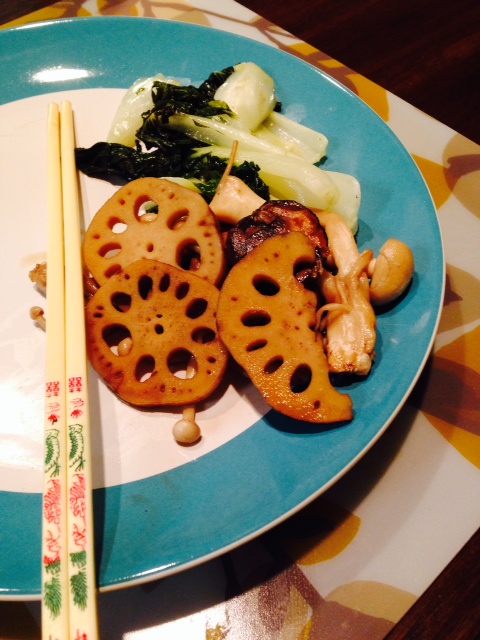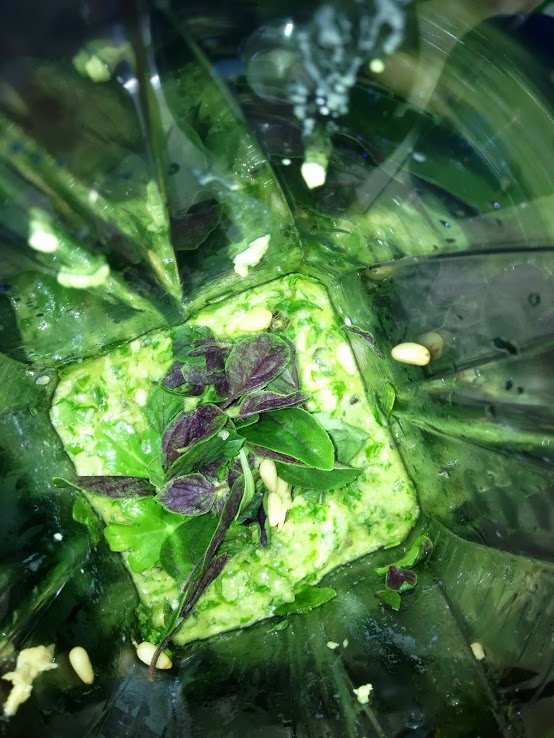Maybe you have tried the so-called “Buddha’s Feast” or “Buddha’s Delight” vegetarian, soy-sauce based stir fry dish at your local Chinese restaurant. I’d been craving veggies all week and decided to take that healthy dish for a spin tonight – my spin on the dish: adding lotus root.
What is lotus root? It is a starchy root vegetable that has a chewy-crunchy texture and is good for your respiratory system. When sliced, it looks like a rotary telephone’s dial pad. (This is why, as a kid, I used to call my grandma’s meat and lotus root broth “Telephone Soup”). Lotus root is an inexpensive veggie that can be found in Asian supermarkets: 2 pretty substantial roots cost a total of $2. More info on the veggie here.
Onto the “Buddha’s Feast” dish! Aside from the vegetable ingredients listed below, all you’ll need is a pinch of salt and a couple of splashes of light soy sauce (If you want to adapt this to paleo, just cut out the soy sauce and cook the lotus root with a pinch of salt and a couple of splashes of water instead).
Ingredients and instructions:
- Baby Bok Choy: Saute leaves of baby bok choy on low heat until they soften a bit (try to make sure they’re still crispy in texture); cook with a small pinch of salt.
- Mushrooms: Saute an assortment of mushrooms of your choice; don’t need to add seasoning – just enjoy the mushroomy taste on its own.
- Lotus Root: Slice lotus root into thin pieces (keep the rotary telephone dial pad look! See image below) and saute – add a couple of splashes of light soy sauce. If you accidentally add too much soy sauce, add drinking water to the pot. The goal is to soften the lotus root as it cooks, without burning it.
- Arrange on a plate and enjoy!











